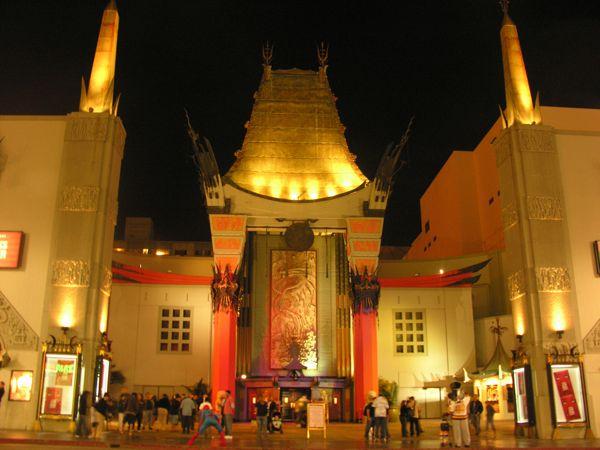Movies Here and There: Spoiled by LA's Superior Theaters

These trips continued, and even escalated to twice a year after I began supplementing my writing for Stereophile with major work on the Stereophile Guide to Home Theater. I then had a decent (though constantly changing!) projection and multichannel setup, but the theater experience, at least in a major market like LA, remained technically superior and a useful reference. Home theater was limited at the time to standard definition from Laserdisc (replaced in 1997 by the superior but still standard definition DVD) and Dolby Pro Logic (also subsequently replaced by lossy Dolby Digital and DTS).
By the time the Stereophile Guide to Home Theater moved to Los Angeles in 2000, with me in tow, the home theater situation was improving. But it took a few years more for the ruinously expensive CRTs of the 1900s to be replaced by smaller and reasonably affordable alternatives. With such a projector (though not a practical alternative for everyone) together with high definition on Blu-ray and lossless audio, the home theater experience can now genuinely equal or exceed even the big LA movie houses, apart from screen size and the support of a huge audience to enhance the experience.
But some of today’s movie audiences are apparently so addicted to their cell phones that they can’t stand to be out of touch even for the length of a two-hour movie and constantly check for e-mails and missed text messages. Fortunately, LA audiences, at least in my favored theaters (the Arclight and the TCL Chinese IMAX in Hollywood, the Village in Westwood, and the AMC 16-plex in Burbank, 10 minutes from my former-home) usually limited those activities to before the film. Perhaps LA crowds are more serious about their movies. LA is the only place I’ve lived where applause after the film, either before or during the credits, isn’t unusual. (“Hey, there’s my friend Joe Shmoe, the second deputy coffee assistant to the third-unit director’s back-up cameraman!”) Or perhaps their added attention to the main reason for being there is the high ticket prices$18.50 each for an evening 2D IMAX ticket in Burbank, and even more for a 3D film!
But now I’m back in the boonies, as it were. Yes, there are at least three multiplexes with over 30 screens within a roughly 10-mile radius. One of them is even an AMC IMAX. I lived in this area years ago, and that’s certainly a big improvement over the situation back then. I haven’t yet experienced those new theaters (though I plan to soon), but the ubiquity of digital projection is now a big plus in smaller markets. Film was always something of a crapshoot; most theaters got mass-market prints, duplicated quickly and often not very well. Even in big markets like LA only a few theaters received what were called premier prints (another reason I was so impressed by the LA theaters in the pre-digital era), duplicated at much lower speed and handled more carefully by the top-quality projectors in those theaters. But with digital projection and cheap, flawless duplication, even smaller markets can competewith the possible exception of projection lamps. These are very expensive (sometimes running into four figures) and need to be changed often. But theater owners in smaller markets, markets with audiences perceived (rightly or wrongly) as less critical, might be tempted to delay replacement, using lamps into their dotage. The result will be dim projection and skewed color.
On the audio side, few small-market theaters can afford the best audio gear. But this might offer at least one advantagelower volume. The sound levels at the LA theaters I’ve described can often overwhelm the listener, which is why I always brought along earplugs. (And I hardly skimp on the volume in my home theater, using sound levels that many would find uncomfortable!) Interstellar at the TCL Chinese was an ear-shattering experience!
I’ll miss those LA theaters, though I expect to get back there for a short visit every year, funds permitting (Florida is a bit further away than Santa Fe). But with a good home projector, both my own and those I hope to review, a comfortably big screen, and an audio system that I would rate higher than that of most theaters (it can’t fill a barn-sized space at 105dB, but it won’t have to), the movie theater cultural shock of the move from LA to small town Florida will hopefully be a lot smoother than that 1990 move from LA to Santa Fe.





























































